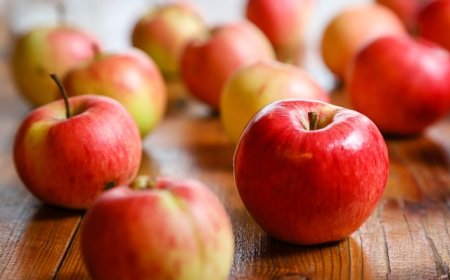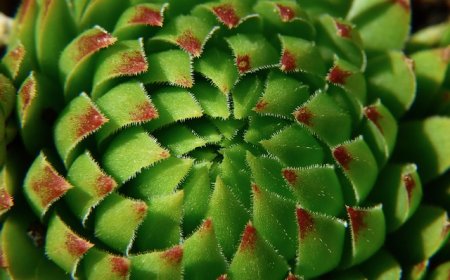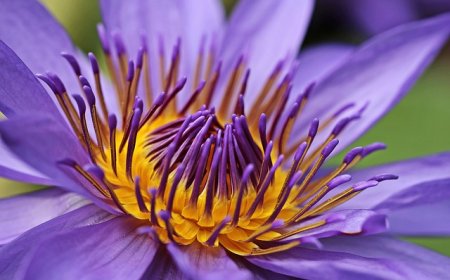Pollination for Students – How Plants Reproduce With Pollinators
Discover how pollination works, why bees and butterflies are important, and how plants rely on animals and wind to make seeds and reproduce.
🐝 Pollination: How Plants Reproduce With a Little Help From Nature
🌸 Introduction
Every time you see a bee buzzing from flower to flower or a butterfly landing on a bloom, something amazing is happening. That insect is helping the plant reproduce by spreading pollen—a process called pollination.
Pollination is a key step in the plant life cycle. It allows plants to create seeds, which grow into new plants. Without pollination, many of the foods we eat—like apples, strawberries, and almonds—wouldn’t exist. In this article, you’ll learn what pollination is, how it happens, and why it's important for life on Earth.
🌼 What Is Pollination?
Pollination is the process of moving pollen (a powdery substance) from the male part of a flower (called the stamen) to the female part (called the pistil) of the same or another flower. This step is necessary for fertilization, which leads to the formation of seeds and fruit.
Without pollination, flowering plants cannot reproduce.
🌸 The Parts of a Flower Involved in Pollination
To understand how pollination works, it helps to know the main parts of a flower:
- Stamen – The male part of the flower. It has:
- Anther – produces and holds pollen
- Filament – a stalk that supports the anther
- Pistil – The female part of the flower. It includes:
- Stigma – sticky top that catches pollen
- Style – tube that connects the stigma to the ovary
- Ovary – where the seeds form after fertilization
When pollen lands on the stigma, it travels down the style and into the ovary, where it fertilizes the ovule and begins forming seeds.
🐝 How Pollination Happens
There are two main types of pollination:
1. Self-Pollination
The plant pollinates itself. Pollen moves from the stamen to the pistil of the same flower or a flower on the same plant.
2. Cross-Pollination
Pollen moves from one flower to a different plant of the same species. This is more common and leads to greater genetic diversity.
Cross-pollination usually involves pollinators or the wind to help transfer the pollen.
🐞 Types of Pollinators
Many living things help pollinate flowers, either by accident or on purpose. These include:
- Insects: Bees, butterflies, beetles, flies
- Birds: Especially hummingbirds
- Bats: In tropical regions
- Wind: Carries pollen from one plant to another (common in grasses, trees, and grains)
- Water: Rare, but some aquatic plants rely on it
🐝 Why Bees Are Excellent Pollinators
- Their bodies are hairy and collect pollen easily
- They visit hundreds of flowers a day
- Bees are loyal to one flower type per trip, increasing the chances of successful pollination
When pollinators visit flowers for nectar (their food), they brush against the anthers and carry the pollen to the next flower they visit.
🍎 What Happens After Pollination?
After successful pollination:
- The pollen travels down the pistil to the ovary.
- Fertilization occurs when the pollen joins with an ovule.
- The fertilized ovule becomes a seed.
- The ovary around the seed often develops into a fruit.
Examples:
- A pollinated apple blossom becomes an apple
- A pollinated flower on a strawberry plant grows into a strawberry
This process completes the plant's reproductive cycle.
🌍 Why Is Pollination Important?
Pollination is vital for:
- Food production – Over 75% of the world’s food crops depend on pollination
- Biodiversity – Plants reproduce and evolve thanks to pollination
- Ecosystems – Plants provide food and shelter for other living things
Without pollination, many species—including humans—would struggle to survive.
🧠 Vocabulary Words
| Word | Definition |
|---|---|
| Pollination | The transfer of pollen from a flower’s stamen to its pistil |
| Pollen | A powdery substance from the male part of flowers used in reproduction |
| Stamen | The male reproductive part of a flower |
| Pistil | The female reproductive part of a flower |
| Stigma | The sticky part of the pistil that catches pollen |
| Fertilization | When pollen and ovule join to form a seed |
| Pollinator | An animal or agent that helps move pollen from flower to flower |
🧪 Simple Classroom Activity
🌸 Pollinator Simulation Game
Materials:
- Paper flowers with labeled parts
- Small bowls of colored powder (representing pollen)
- Cotton swabs or pipe cleaners
Instructions:
- "Pollinators" use the cotton swab to collect "pollen" from one flower’s anther.
- They fly (walk) to another flower and touch the stigma.
- Track how many flowers get pollinated!
This hands-on activity shows how pollination works—and how important pollinators are.
🧒 Kid-Friendly Summary
Pollination is how plants make seeds. It happens when pollen from the stamen (male part) lands on the pistil (female part) of a flower. Bees, butterflies, birds, and even the wind can help move pollen. After pollination, the flower can grow seeds and fruits, starting the plant life cycle all over again.
🌟 Interesting Facts About Pollination
- A single honeybee can visit up to 5,000 flowers in one day!
- The wind pollinates plants like wheat, corn, and oak trees.
- Some flowers open only at night and are pollinated by bats and moths.
- Orchids are so specialized that some rely on only one type of insect to pollinate them.
- Without pollinators, we would lose coffee, chocolate, apples, and many vegetables!
📘 Key Takeaways
- Pollination is how flowering plants reproduce by moving pollen from the stamen to the pistil.
- Pollinators like bees, butterflies, and birds help plants make seeds and fruits.
- Fertilization occurs after pollination, starting seed development.
- Pollination is essential for food, biodiversity, and ecosystems.
- Protecting pollinators is important for our future and the environment
🎯 Interactive Quiz
1. What is pollination?
A) When plants grow leaves
B) When a seed grows roots
C) When pollen moves from the stamen to the pistil
D) When flowers turn colors
2. Which part of the flower receives the pollen?
A) Anther
B) Filament
C) Petal
D) Stigma
3. What is a pollinator?
A) A plant that grows fast
B) An animal that helps move pollen
C) A type of seed
D) A flower that eats bugs
4. What usually forms after fertilization?
A) A leaf
B) A petal
C) A seed
D) A stem
5. What part of the plant becomes fruit?
A) Stem
B) Ovary
C) Stigma
D) Root




















































